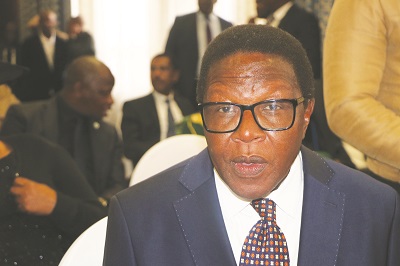By:Thoboloko Ntšonyane
MASERU – The incoming Minister of Energy Prof Nqosa Mahao has set sights high for the energy sector in the country.
He promised to see to it that the country’s current energy challenges are addressed and ongoing interventions to increase the production capacity of the electric energy are expedited.
Prof Mahao was speaking this in an interview with this publication at the Royal Palace last week after taking oath of office and allegiance as the Minister in His Majesty’s government.
The incoming Energy Minister promised to hit the ground running saying he will engage the officials at the Ministry and the relevant parastatals to establish what they have been doing and assess what gaps and deficits and develop a concrete programme on the basis of those findings that would enable them to move forward.
“[We] will try and ensure that the spread of energy is really enhanced in the country throughout,” he said.
In May this year, the then Lesotho Electricity Company (LEC) Managing Director Mohato Seleke mentioned that during the previous financial year, the utility has spent in the north of M800 million on bulk power it imports from Mozambique and the South Africa’s Eskom. This figure he said it is exclusive of the tariffs.
On June 12, Prime Minister Samuel Matekane led the launch and handover of the Phase I of the Mafeteng based solar plant, Ramarothole Solar Power Station which has generating capacity of 30 megawatts a move contributing to the national power pool.
When complete the Phase II of Ramarothole Solar Power Station will generate additional 50 megawatts of electricity to the national pool. This could be a move to seeing the country reaching closer to energy sufficiency as the country’s energy demand is said to be around 150 megawatts.
The world is moving to adapt and adopt the usage of the renewable energy including wind, solar, biomass and geothermal energy sources. The United Nations (UN) Sustainable Development Goals (SDGs) goal No. 7 calls for “affordable, reliable, sustainable, and modern energy for all” by the year 2030.
Currently ‘Muela Hydropower Station produces about 72 megawatts.
The proposed Oxbow Hydropower Scheme under the Phase II of the Lesotho Highlands Water Project (LHWP) is expected to reach completion by the 2028, is envisaged to generate 80 megawatts.
Asked on how he will ensure urgency with regards to Ramarothole plant which has already been commissioned to kick start the construction of the Phase II project, he undertook to hit the ground running to harness that solar energy to spread across the country.
According to the ‘Lesotho Energy Policy 2015-2025, the “Government will ensure sustainable supply of bioenergy resources. Government will improve access to renewable energy services and technologies.”


